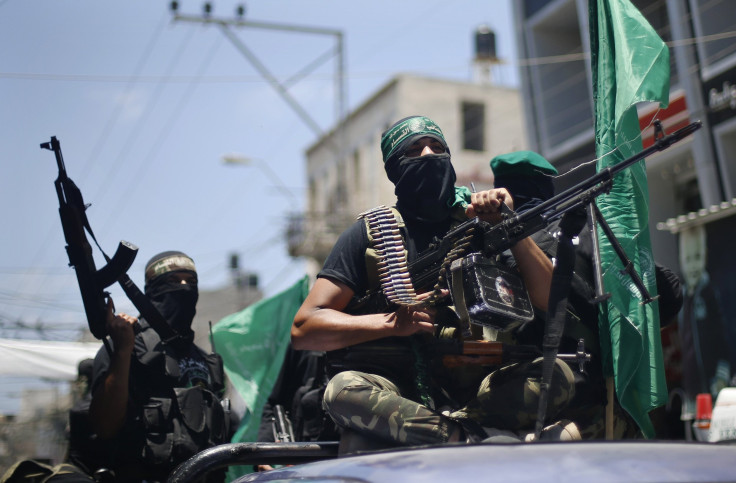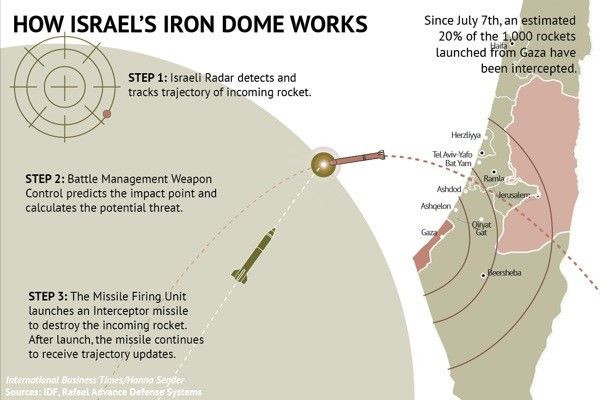Israel Focuses On Destroying Gaza Tunnels That Supply Hamas With Iranian Rockets

When the Israeli Defense Force (IDF) announced Thursday it was launching a ground offensive in Gaza, it did not specify in clear terms its scope, but a statement released by the Ministry indicated that it would have a familiar objective -- it would try to target tunnels that supply Hamas with the rockets it shoots into Israel.
"Dozens of terror tunnels are spread throughout the Gaza Strip, the majority of them constructed and utilised by Hamas," the IDF said.
There are two kinds of tunnels in Gaza: Those that lead to Egypt through Rafah, though many of them have been closed by the Egyptian military, and those that lead into Israel.

Israel has launched offensives in Gaza with similar goals before but has largely failed to stop Hamas from receiving rockets and other weapons via the tunnels. In comparison to past years, analysts said Hamas seems to be similarly equipped, indicating that Israel’s past offensives have not worked fully.
In November 2012, the IDF and Hamas engaged in an eight-day battle in the Gaza Strip. Israel launched a military attack targeting Hamas leadership and control centers, as well as storage facilities. The offensive, like the one today, focused primarily on underground smuggling tunnels. During the eight-day period, Hamas fired 1,506 rockets at Israel, according to the IDF. Since the beginning of the most recent conflict 10 days ago, Hamas has fired more than 1,300. Israel has carried out nearly 2,000 airstrikes on Gaza.

An even closer look at the effectiveness of the Israeli offensives indicates that while the IDF destroys Hamas tunnels and control centers, the militant group always rebuilds them and re-stocks its weapons.
Elliot Abrams, a senior fellow at the Council on Foreign Relations, said in a press call Friday that in 2012 Hamas fired more than 2,500 rockets, but only 74 in 2013 -- an indication that Israel had successfully targeted the group’s smuggling tunnels during Operation Pillar Cloud in November 2012. According to the IDF, the military successfully targeted 66 tunnels during the offensive.
“Hamas is determined to import weapons from Iran and move [them] from Gaza to the West Bank,” Abrams said.
Iran has found ways to send Hamas rockets for years, mostly through Gaza’s tunnels from Egypt and Israel. The Israeli military has long worried about Iranian weapons, particularly rockets, reaching Gaza.
In a cable written following Israel’s Cast Lead Operation in 2008 by the U.S. Embassy in Tel Aviv, Maj. Gen. Dan Harel said the focus of the Israeli military in Gaza was part of a bigger campaign to address the issue of Iranian support to Hamas. He said Hamas had Chinese- and Iranian-made 122mm Grad rockets with a range of 30 kilometers (18.6 miles). He said the rockets came in four pieces and could fit through narrow tunnels to be reassembled in Gaza.
It is unclear if Hamas has obtained new, perhaps more powerful, weapons from Iran since the last Israeli invasion in Gaza. There have been several reports that Iran makes weapons specifically for Hamas that can fit through the tunnels easily, but there have been no reports that any new rockets would be more powerful. In March, the Israeli navy seized a ship in the Red Sea that allegedly held M302 rockets from Iran. M302 rockets have the ability to hit a target 100 miles away.
Despite Israel's attempts to destroy the tunnels, Abrams said that the Israeli military is not going "to be able to end forever the risk of attacks out of Gaza." Even international efforts to limit the flow of goods through the tunnels has failed, he said.
Under the Geroge W. Bush administration, the U.S. helped establish the Agreement on Movement and Access, a deal between Israel and the Palestinian Authority that set the rules for movement in and out of Gaza.
"It didn’t work at all," Abrams said. "It failed almost immediately." The tunnels continued to be used by not only civilians trying to import valuable goods into the strip, but by Hamas as well. For many, the tunnels provide the only source income for the Gazan economy. It serves as the strip's main trade route."
© Copyright IBTimes 2024. All rights reserved.





















